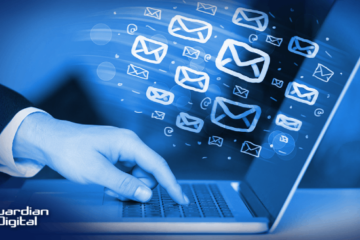In the past, basic email security best practices included using strong passwords, blocking spammers, being cautious of suspicious offers, and verifying requests. However, with email now being crucial to business success, a more robust set of best practices is necessary to protect against cyber threats like ransomware and business email compromise (BEC).
As new threats continue to emerge, inadequately secured email can pose a significant risk to your business. This article will explore the various types of email risks organizations face and provide simple methods to enhance your business’s email security strategy and defend against damaging cyberattacks and data breaches, the majority of which originate from email.
Email-Borne Threats Organizations Face:
Cybersecurity threats are widespread, with the rise of interconnected systems making cybercrime increasingly appealing. A security breach can lead to various consequences for an organization, including revenue loss, reputational damage, regulatory costs, and lost customers. Common cyber threats include phishing, business email compromise (BEC), malware, ransomware, and viruses.
Why Small Businesses Are Vulnerable:
Small and medium-sized businesses (SMBs) are frequently targeted by cybercriminals due to their limited security resources and budgets. Small businesses are at risk of ransomware attacks, with data showing that most SMBs cannot recover from such attacks. Statistics reveal that a significant number of cyber breaches impact businesses with fewer than 1,000 employees, and malware is the most common type of cyberattack against small businesses.
Simple Tips for Improving Cybersecurity:
To enhance email security, organizations should implement measures such as using a spam filter, email encryption, multi-factor authentication (MFA), and backing up important files regularly. Training employees on cybersecurity awareness is also essential in preventing cyberattacks.
Stronger Methods of Email Protection:
By proactively preparing for potential attacks, organizations can significantly reduce the cost and impact of a cyber incident. Implementing robust email security practices and continuously educating employees on cybersecurity best practices can help safeguard your business against email-borne threats. Enhancing your organization’s email security is crucial in today’s digital landscape. By implementing even stronger practices, you can effectively reduce your exposure to email threats and minimize potential damage. Here are some key steps you can take to bolster your email security strategy:
1. Strengthen Your Email Security Strategy with Proactive Additional Layers of Protection
Don’t rely solely on endpoint security to safeguard your business assets. To combat sophisticated threats, incorporate proactive protection measures with expert system monitoring and support. This includes anticipating and learning from emerging attacks, providing real-time cybersecurity insights, and enhancing decision-making and policy enforcement.
2. Protect Email With Sender Authentication
Implement sender authentication protocols like SPF, DKIM, and DMARC to prevent phishing attacks, email spoofing, and business email compromise. These protocols verify the authenticity of sender emails and help protect your organization from malicious activities.
3. Invest in Fully-Managed Email Security Services
To fortify your email security, invest in a fully-managed email security solution tailored to your specific business needs. This solution should offer multi-layered security measures that detect and block threats in real-time, providing the expertise and support required to safeguard sensitive data and assets.
By following these best practices, you can strengthen your organization’s defenses against email threats and ensure a more secure digital environment. Stay informed and continue learning about email security to stay ahead of evolving cyber threats. Explore the resources below for more information on improving your cybersecurity posture.



